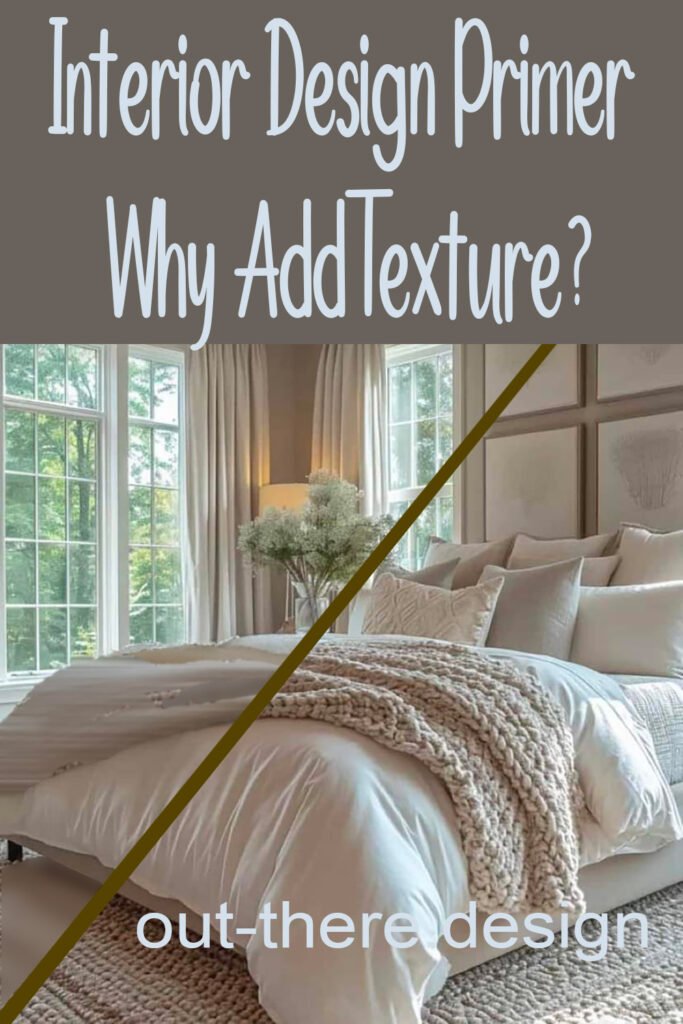Texture to Transform Your Room from Ordinary to Extraordinary
Have you ever tried to pinpoint the difference between nice and spectacular, nice and stunning, nice and beautiful?
Though it takes more than one simple tweak for a perfect project, there is an area that is an often overlooked design concept, that can change a project exponentially, Texture.

Recently, while browsing home decor pictures I saw a surprising number of “nice” rooms.
I was surprised. Is nice anyone’s home decorating goal? Is nice what an artist strives for? Do you shop for nice wearable art? Would you be happy if someone called your personal style nice? Do you want to sew nice clothes? You see where I’m going with this.
If you’re like me and watch a lot of TV design shows you have seen how often the designer casually throws a chenille throw across a sofa lauding how this adds texture. Texture? Is that important? Yes, it is!
Texture is an often overlooked yet fundamental element in design that significantly impacts the way we perceive and interact with our surroundings. From the smooth surface of polished marble to the rough grain of weathered wood, textures add depth, character, and dimension to objects, spaces, and experiences.
We are tactile beings, and our sense of touch is intricately linked with our emotions and memories. The feel of a soft, plush fabric can evoke feelings of comfort and coziness, while the roughness of sandpaper might induce discomfort or tension. In design, understanding the psychological impact of texture allows designers to create environments that elicit specific emotional responses and enhance our user experience. All of this happens in an instance. All we understand is that texture makes things more interesting. Examine the before and after pictures included here to see the impact texture has in a viewing experience.
Texture is a multifaceted and indispensable element in design that influences our perceptions, emotions, and experiences. From its psychological and aesthetic appeal to its functional considerations and cultural significance, texture enriches our interactions with the designed world, imbuing it with depth, character, and meaning.









Leave a Reply